How To Season A Cast Iron Skillet
As an Amazon Associate I earn from qualifying purchases.
Today I am thrilled to bring you a guest blogger who will be speaking on a topic we all need to know about – how to season a cast iron skillet the right way. As a Mechanical Design Engineer, Richard Hall may seem an unlikely choice for a food blogger, but his heritage, common-sense know-how, and generosity in sharing his knowledge with us make him the perfect choice for a topic of the utmost importance to any Southern cook! Thank you, Rich!
Hey all,
Since Southern Plate has all these great Southern recipes, I thought it might be useful to share how to season a cast iron skillet or other types of cast iron cookware. You may ask, what is seasoning and why do I need to season my cast iron skillet? The answer is very simple. Seasoning makes it non-stick like all the new miracle cookware. And the why is you can buy and maintain a non-stick skillet with nothing more than vegetable oil and shortening and common sense and it will never wear out. The cast iron skillet can be used to cook on the stovetop, the oven, or the grill. A good iron skillet can be passed down as an heirloom if taken care of properly.
What You Need to Season a Cast Iron Skillet
It is very simple to do albeit a little messy. What you will need is:
- The cast iron skillet
- A box of vegetable shortening, which can be purchased in your favorite supermarket for less than $2.
- A roll of heavy paper towels
- Your oven
Just a quick note, the seasoning of a new skillet and the re-seasoning of an are the same except for the first step. So let’s get started.
How to Season a Cast Iron Skillet
Wash new skillets before seasoning
Make sure your new has been washed in hot water and mild dish soap. This will remove the factory anti-rust coating. For re-seasoning an existing skillet, just make sure to wipe the entire surface with hot water and a clean washcloth or a paper towel (sponges need not apply). Dry the skillet by heating it on the cooktop then let it rest and cool. Preheat your oven to 200 degrees.
Season with vegetable shortening or oil
Fold the paper towel into a fourth and place a dollop of vegetable shortening in the skillet. The size is not important, but for a 10” skillet, use about 1/4 of a cup. More can be added as required to cover.
Instead of lard or vegetable shortening, use any kind of vegetable oil. I recommend refined coconut oil as it has a higher smoke point.
Take the paper towel and coat the interior, the exterior down to the bottom edge, and the handle liberally.
I don’t coat the very bottom of the skillet, as any cooking surface that it touches will make smoke and just burn off the shortening or oil.
Place the skillet in the oven
Once you have the skillet coated, place it in the oven (at 200 degrees) and set a timer for 3 hours. This low temp will open the cast iron pores up and allow the vegetable shortening to penetrate as it liquefies.
Remove from the oven
After the time is up, cut off the oven and let the skillet cool. Once it is cool enough to touch, wipe it down with another paper towel to remove any or vegetable shortening and just leave a on the surfaces.
In another hour or so, wipe it down again.
After this final wipe, the skillet will continue to cool and in about an hour will look like the last picture.
Using Your Cast Iron Skillet
Now you are ready to use the skillet. For the first couple of uses, cook something greasy like bacon or sausage. This will help heat cycle and re-coat the interior surface which will make the non-stick coating better. Also, be aware that it is going to smoke for the first couple of uses as it heat cycles and burns off the water trapped in the pores and the excess vegetable shortening.
To maintain the skillet you will need to wipe the interior every couple of months with bacon grease during a heat cycle or cook something greasy and re-season about every 2 years following the process above.
Also, don’t let food sit in the skillet as this will remove the seasoning.
After each use, wash the skillet out using a very mild soap solution and warm water. NEVER wash in the dishwasher. The reason for using mild soap solution is to keep from removing the seasoning layer.
One other note that I personally do is the drying step after a wash. I will turn the cooktop on to high heat and place the wet skillet on it for about a minute. This will heat the skillet up enough to dry the water and heat cycle the pores. This keeps everything as it should be.
—
If you choose, you can render your own lard from bacon drippings. If you own a microwave bacon-cooking tray it is very easy. Just cook some bacon and let the drippings cool either in the tray or pour them into a bowl or shallow dish while still hot. Once it has cooled and congealed, you can use it just like the vegetable shortening as described above. This is perfect for the occasional re-seasoning of your skillet.
I hope this has been helpful and if you have any questions just direct them to Southernplate.com and I’m sure Christy can find me to get the answers.
See you ’round,
Rich
Before you go, check out these great cast iron recipes:
Southern Cubed Steak and Milk Gravy
Skillet Carrot Cake from Southern Cast Iron

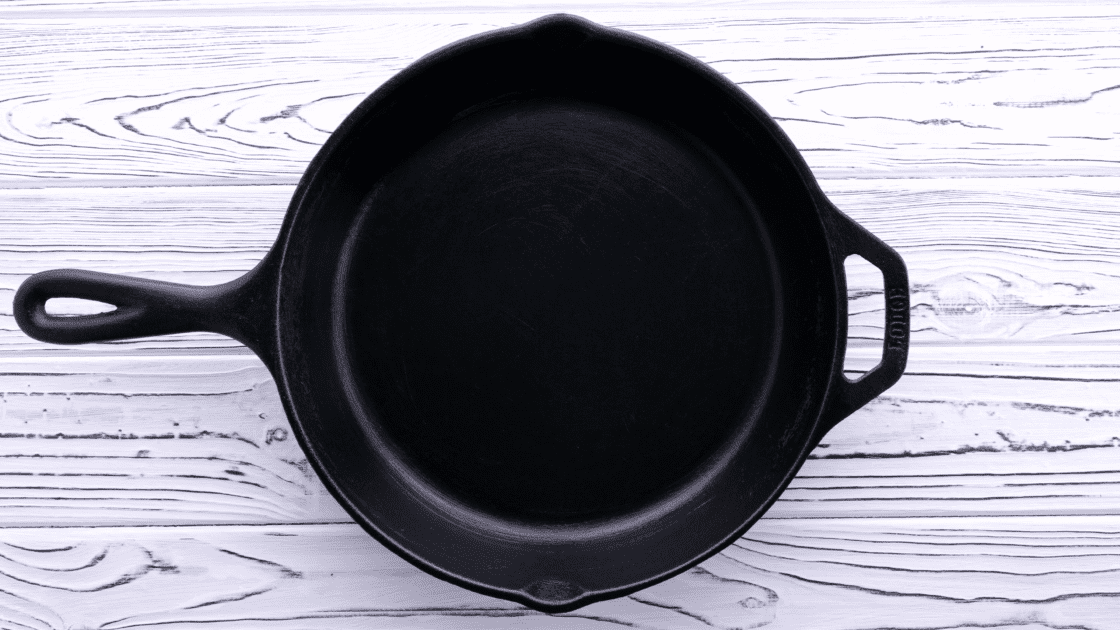
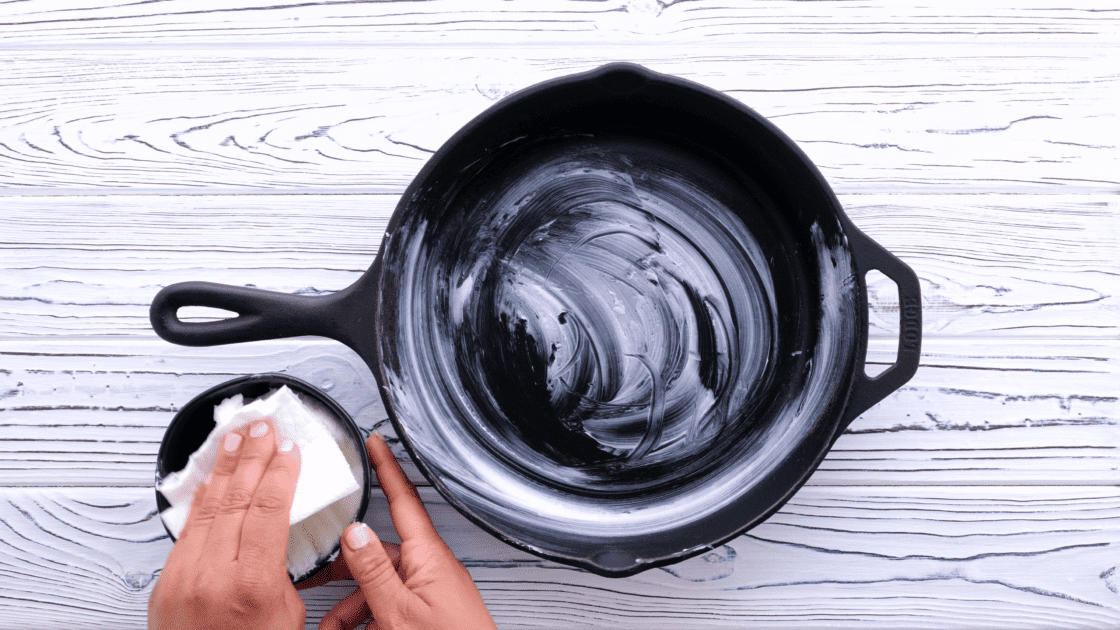
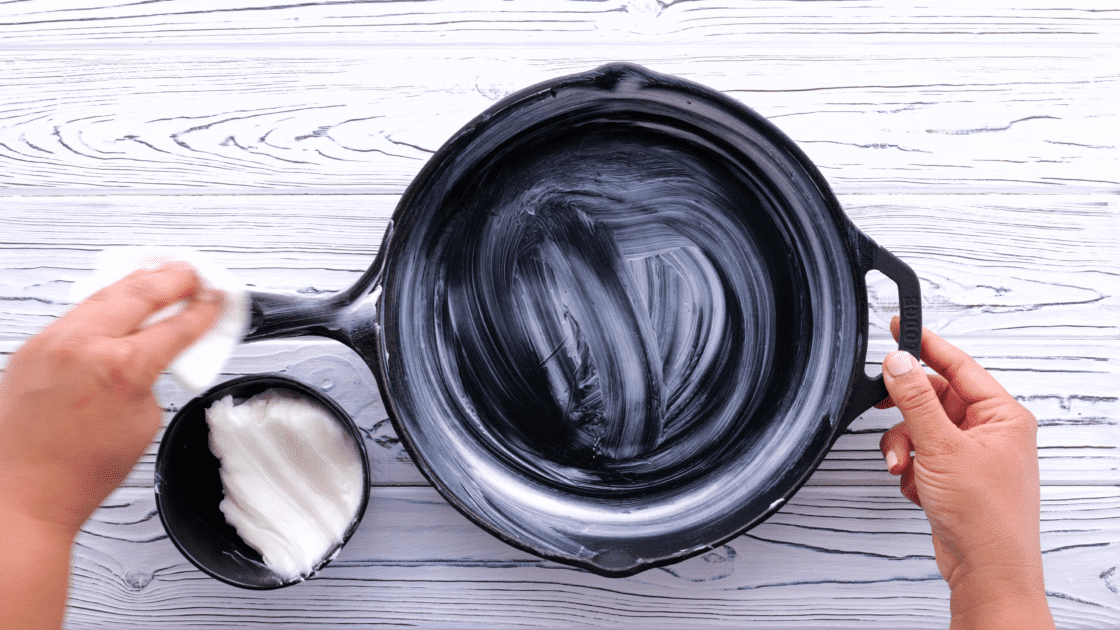
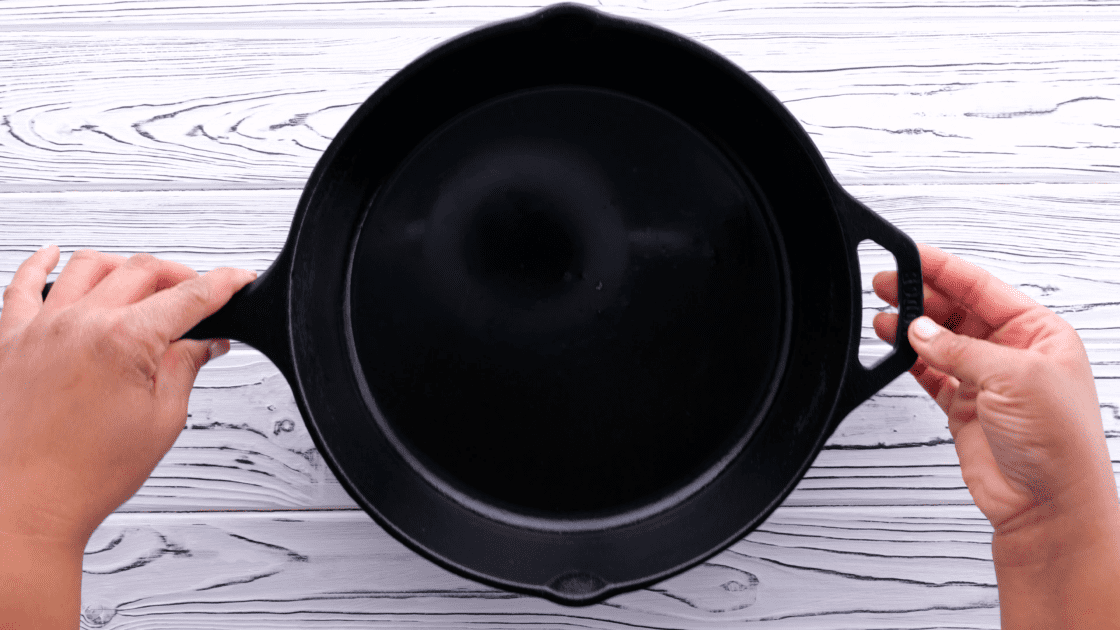

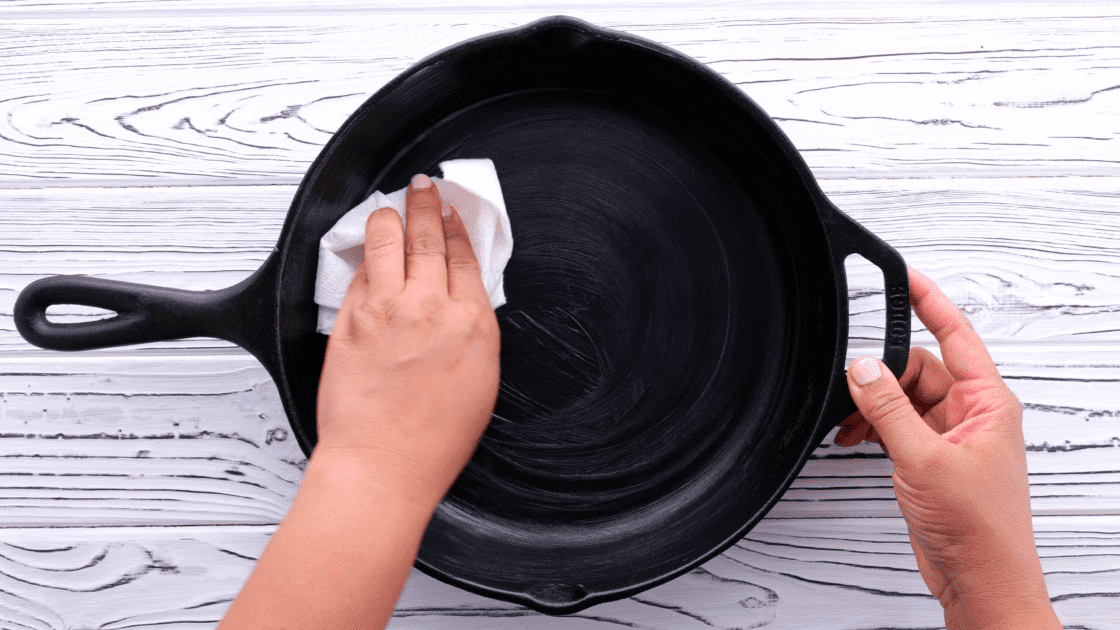


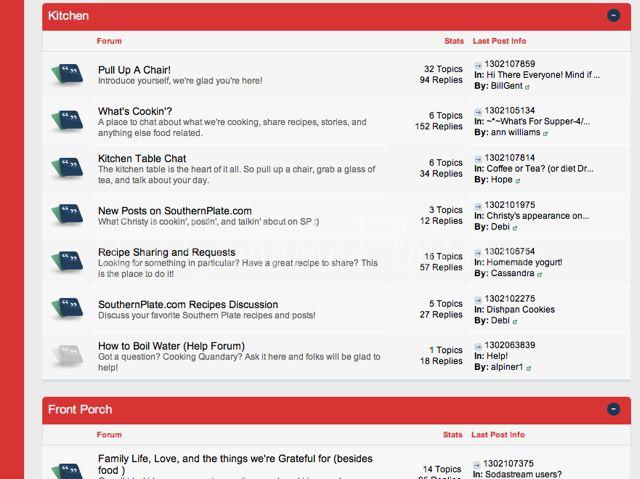

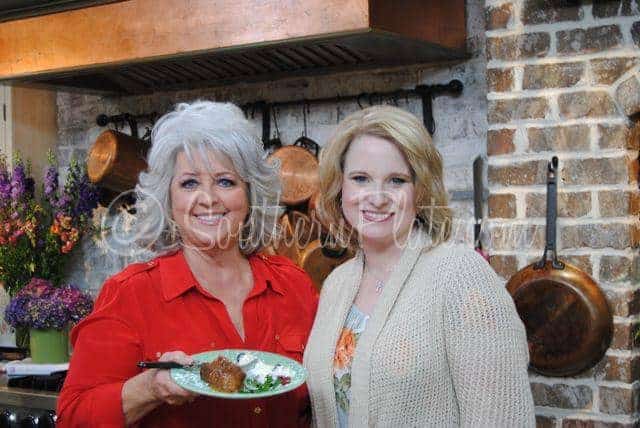

Thank you for the seasoning tips!
Just wanted to warn people about placing their cast iron in the oven on the self cleaning cycle. My grandmother read this 10-15 years ago and put several of her old cast iron skillets in the oven. When the cycle finished, all of her skillets were broken! Apparently not all ovens are the same.
I always clean my pots/skillets with some veg. oil and kosher salt.
A tbsp. of vegetable oil or crisco oil and 2 tbsp. of kosher salt goes into the pot/skillet. Then use a small wadded up square of paper towel and “scrub” the interior surface, until the skillet is clean. You’ll know it is clean, because the salt will be filthy. Wipe out the salt, and use a clean paper towel to wipe out the oil residue in the pot/skillet.
I do this every time I cook withthemt. Every 3-4 months, I re-season them like I did when I first got them. I have had my cast iron pots and skillets for 20+ years, and they still look new.
One final tip — NEVER put cast iron cookware into the dishwasher!!!
I had to chuckle at the comment by Bill Gent……when I was about 7-8 years old (what IS it about that age?), I made note that my Dad had an old cast iron pot bellied stove in his work shop….I also noted that he had a large can of Kelly green boat paint, so my cousin and I thought we’d “pretty up” that old stove, and set about to paint it (and the floor, too!). We were so pleased with our work! Can’t recall Dad’s response, but, be assured, there were no harsh words for us….my Daddy loved his girl, more than any old stove!! Thanks for the trip down memory lane! Lynn Barry
I never wash my skillets in soapy water. I do use HOT water & a scrapper to clean anything that has run over or stuck on to it. then wipe dry with a paper towel & rub a little oil into it then wipe the excess off.! Love cooking with cast iron!! Makes some of the best biscuits around in a cast iron skillet!
To clean mine, I pour in some Kosher salt and use it as an abrasive with a paper towel. It cleans off any stuck food, then wash with very hot water (no soap) and dry it on the stove as Rich does. Works great
This method is the best. No soap please. It will take more than a few times of seasoning but it is so worth being patient to keep forever. I prefer to dry my skillets with paper towel before reheating after use. Then spread a little oil high temp on burner for 2 min. Atlanta girl knows. Go Dogs!
Yep… NEVER, and I mean NEVER use any type of soap! Just a good rinse with warm water. I use a pad that is made of stainless steel made elusively for cast iron skillets. If by chance it gets a tad grungy, a good scrub with salt and water will do the trick. Dry it out over a low burner for a few minutes and then pour a few drops of Canola oil and wipe it out with a paper towel. Mine is so slick that I have to use a thin metal spatula to pick up an egg as it slides all over the place, and I’m talking about a cast iron skillet from the early 1950’s.
The newer cast iron skillets are junk, such as the Lodge. Then again, you can’t find the ones that are made the way they WERE, and should be (a SMOOTH bottom) as they simply won’t take the time to do things correctly any longer. Get on eBay, or shop around at garage sales and buy an old one, such as a Griswold or Wagner, that was made as it SHOULD be made.
I am so excited!!! I just found my late Mom’s old skillet in the bottom of my cupboard and it is a Wagner!! She probably bought it 50 years ago. Now I am going to use these tips and get it seasoned up and ready to go.
What does that mean….spread a little oil high temp on burner……???
I remember my mom putting her iron skillets into the wood stove overnight, with a big fire in it. That would burn off any thick, rough residue due to their constant use. They came out as smooth, just like new. Then she would re-season them. I now have her 10″ skillet and a very deep skillet that I use for a deep fryer. Looking for lids though.
I have bought cast iron from thrift stores that were so bad. I build a big fire with limbs or wood outdoors and throw them into it. It cleans them throughly. Then i season them as above and never wash but just wipe them out with a paper towel. Love cooking with cast iron.